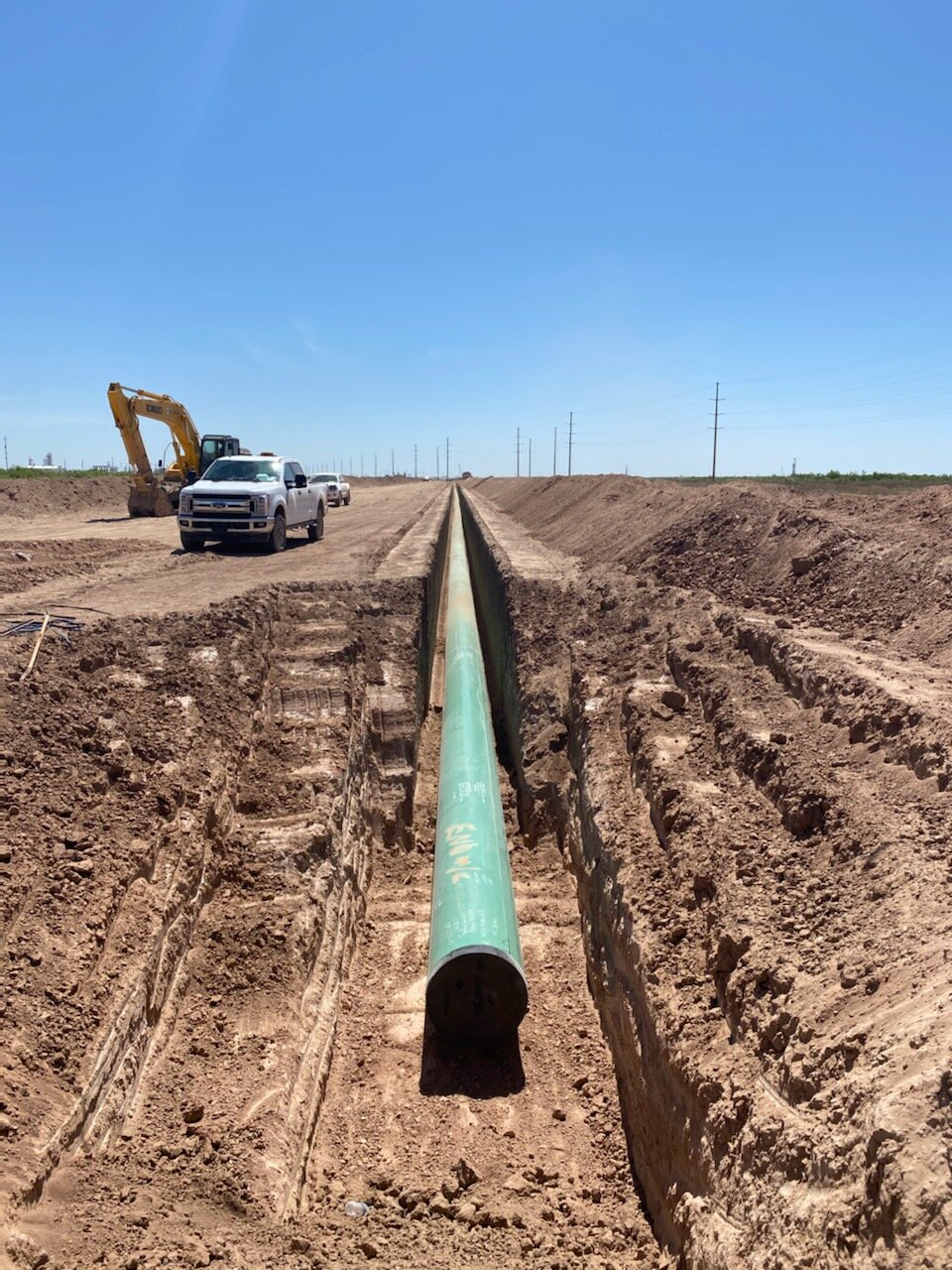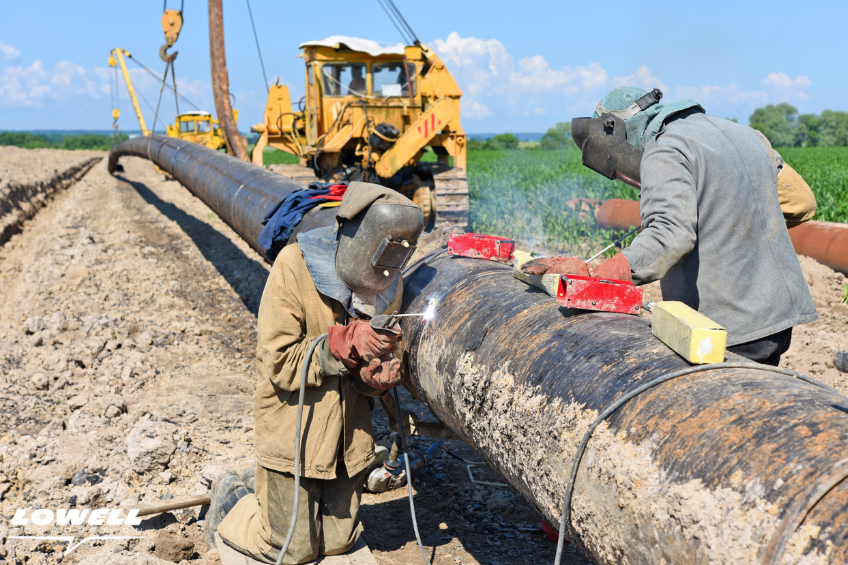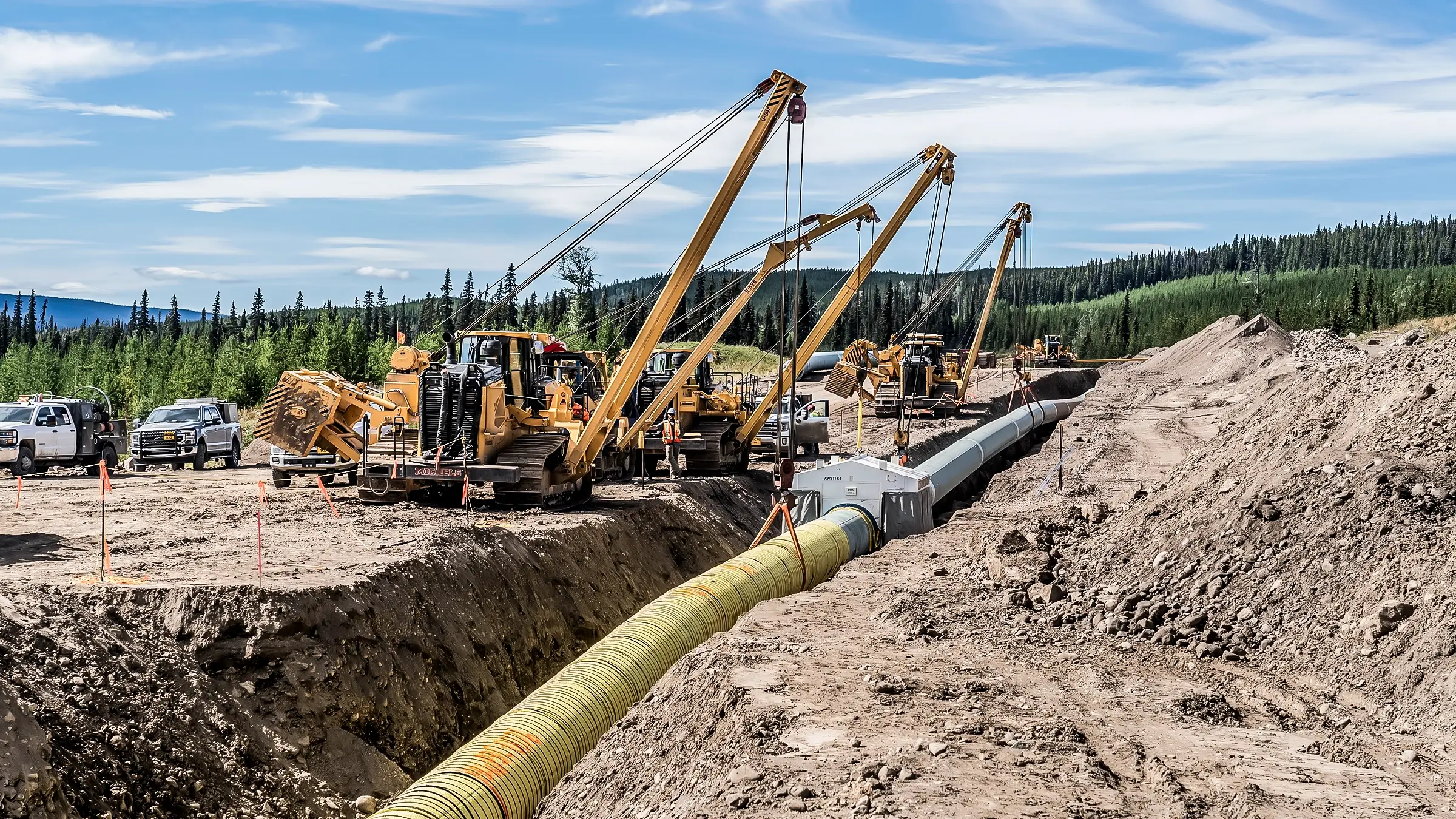Midland oilfield pipeline services: Practical approach for incident readiness
Wiki Article
Recognizing the Trick Attributes of Pipeline Providers and Their Effect On Performance
Pipeline services play an essential role in different industries, influencing functional performance markedly. Secret attributes, such as advanced monitoring modern technologies and maintenance strategies, are crucial for minimizing downtime. Additionally, governing compliance warranties safety and environmental management. The interplay in between layout, framework, and financial factors can make complex these processes. Comprehending exactly how these elements impact total effectiveness elevates crucial concerns regarding ideal methods and future developments in the area.The Duty of Technology in Pipeline Surveillance
As developments in modern technology remain to evolve, the significance of effective pipeline monitoring has come to be progressively evident. Modern pipeline systems depend on sophisticated monitoring devices that boost operational efficiency and safety. Technologies such as real-time information analytics, sensors, and drones give drivers with prompt understandings right into pipeline conditions, allowing them to detect leakages, corrosion, and various other possible concerns before they escalate into substantial troubles.Furthermore, the integration of Internet of Things (IoT) tools has changed traditional surveillance approaches, allowing for continuous monitoring and automated coverage. This positive strategy not just decreases risks yet also enhances upkeep schedules and resource allocation. In addition, advanced software systems assist in information visualization and analysis, encouraging decision-makers to react quickly to abnormalities. Jointly, these technical innovations not just enhance pipe honesty however also foster ecological stewardship by alleviating the possible impact of leakages and spills.
Maintenance Strategies for Boosted Effectiveness
Reliable maintenance strategies are important for maximizing pipeline effectiveness. Carrying out anticipating upkeep techniques, sticking to routine assessment methods, and establishing durable emergency action plans can greatly improve operational dependability. These strategies not just decrease downtime yet also add to the overall security and integrity of pipe systems.Predictive Maintenance Strategies
Predictive maintenance methods are significantly acknowledged for their capacity to enhance functional effectiveness in pipeline solutions. By leveraging information analytics and keeping track of technologies, these techniques allow drivers to anticipate equipment failures prior to they occur. This positive technique decreases unexpected downtime, reduces upkeep expenses, and extends the lifespan of essential assets. Sensing units and IoT devices play a critical duty in gathering real-time information, permitting the analysis of tools health and wellness and efficiency fads. Machine discovering formulas assess this data to determine patterns and predict potential issues. Pipeline drivers can arrange upkeep tasks throughout non-peak times, maximizing resource appropriation and guaranteeing continual operation. Inevitably, the adoption of anticipating upkeep promotes a more trusted and reliable pipeline framework.
Routine Examination Protocols
Regular examination methods work as a foundation of maintenance methods intended at boosting efficiency in pipe procedures - Midland oilfield pipeline services. These procedures entail organized analyses of pipeline honesty, concentrating on discovering potential concerns prior to they rise. Regular assessments generally consist of aesthetic assessments, leak detection modern technologies, and pressure monitoring to assure peak efficiency. By sticking to recognized timetables, drivers can identify rust, product wear, or blockage, thus minimizing downtime and repair work prices. Furthermore, information gathered throughout examinations can notify predictive upkeep initiatives, allowing for a positive method to pipeline management. Ultimately, regular assessments not just extend the life expectancy of pipeline facilities however additionally contribute to much safer and much more reputable transport of sources, reinforcing total operational performanceEmergency Response Planning
Emergency action planning is essential for keeping efficiency in pipeline procedures, ensuring that drivers are prepared to deal with unpredicted events promptly and efficiently. A well-structured emergency response strategy consists of clear procedures, designated roles, and communication approaches to reduce threats related to pipeline failings. Normal drills and training enhance group preparedness and familiarize employees with emergency situation procedures. Furthermore, having readily offered sources, such as spill control devices and emergency situation call checklists, can considerably minimize reaction times. By incorporating real-time tracking innovations, drivers can quickly identify and respond to problems, reducing environmental effect and functional downtime. Ultimately, a comprehensive emergency action strategy not only safeguards properties and workers but additionally strengthens the overall performance of pipeline solutions.Regulative Conformity and Safety And Security Criteria
Regulative compliance and security requirements play a vital function in the pipe services market. Creek Pipe local contractor. Complying with industry laws guarantees that business apply efficient security protocols and take the chance of administration approaches. This dedication not just shields personnel and the atmosphere but also boosts total functional efficiencyConformity With Sector Regulations
Conformity with market guidelines is important for making sure the safety and efficiency of pipe operations. Regulative structures, such as those developed by the Environmental Protection Agency (EPA) and the Pipeline and Hazardous Products Safety Administration (PHMSA), set rigid requirements that drivers should abide by. These regulations cover different facets, consisting of pipeline layout, construction, upkeep, and monitoring, assuring that systems run safely and properly. Non-compliance can cause serious penalties, operational hold-ups, and ecological risks. By sticking to these laws, pipe business not only safeguard public security and the setting however also enhance their operational effectiveness. Inevitably, regulative compliance promotes trust among stakeholders, guaranteeing that pipe services can run perfectly in a competitive landscape while fulfilling lawful obligations.
Safety Protocol Application
Effective safety and security procedure application is a vital element of pipe procedures, closely connected to regulative conformity and safety and security requirements. Complying with these procedures not only guarantees the protection of workers yet also safeguards the environment and facilities. A durable safety and security structure consists of normal training, detailed examinations, and the use of suitable security equipment. Organizations has to remain attentive in upgrading their procedures to show changes in laws and technological developments. Compliance with recognized safety standards decreases the danger of crashes and improves operational performance. In addition, a society of security promotes staff member engagement and responsibility, contributing to overall business success. Inevitably, effective safety and security procedure execution is extremely important in maintaining the stability of pipeline services and achieving long-term sustainability in procedures.Threat Management Techniques
Applying durable threat monitoring strategies is critical for ensuring that pipe operations comply with governing needs and safety and security requirements. Organizations has to identify prospective hazards and examine dangers connected with pipeline activities. This entails performing detailed assessments, using advanced monitoring modern technologies, and maintaining conformity with market laws. Normal training for personnel on safety and security protocols enhances situational recognition and prepares groups to react properly to emergencies. Additionally, creating contingency strategies and carrying out drills can considerably minimize threats. Teaming up with governing bodies guarantees placement with evolving safety and security standards. By focusing on risk management, pipe services can improve operational effectiveness while guarding both the setting and public safety and security. Ultimately, an aggressive method to take the chance of management promotes a society of safety within the industry.Pipeline Style and Framework Considerations
How can the style and infrastructure of pipelines affect overall functional efficiency? The configuration of pipelines plays a vital function in identifying their effectiveness. Effective design lessens rubbing losses, thus decreasing energy usage throughout fluid transport. Variables such as size, material option, and layout directly influence flow rates and maintenance demands.Additionally, calculated placement of valves and keeping an eye on systems enhances operational control and safety and security. Creek Pipe Midland TX. Infrastructure considerations, consisting of access for repair and maintenance, greatly impact downtime and general efficiency
Additionally, incorporating innovative technology for real-time monitoring promotes prompt discovery of leakages or inefficiencies, making sure quick reactions to concerns. The overall structural stability, influenced by product toughness and environmental variables, also shapes long-lasting operational success. Consequently, thoughtful design and durable framework are vital for taking full advantage of pipeline effectiveness, ultimately adding to the integrity and earnings of pipe solutions.
Ecological Impact and Sustainability Practices
While the demand for pipe services remains to expand, recognizing the ecological impact and taking on sustainability techniques has become increasingly necessary. The building and procedure of pipelines can notably impact ecological communities, wildlife environments, and water sources. To alleviate these influences, companies are carrying out innovative technologies and techniques targeted at decreasing emissions, preventing spills, and minimizing land disturbance.
Sustainability campaigns frequently include using ecologically pleasant materials, improving power performance, and employing eco-friendly energy resources to power operations. Additionally, companies are increasingly performing thorough ecological analyses before project initiation, making sure conformity with policies and stakeholder involvement.

Expense Administration and Economic Variables in Pipeline Services
As the pipe industry grows, reliable cost management and recognizing financial elements end up being necessary for keeping competitiveness. Firms face different economic pressures, consisting of varying product costs, labor expenses, and regulative compliance fees. To navigate these challenges, pipe service suppliers should adopt tactical economic planning and budgeting techniques.Buying technology can improve functional effectiveness, inevitably reducing costs over time. Furthermore, effective job administration warranties that sources are allocated efficiently, reducing delays and unexpected costs.

Market conditions, such as demand for power and geopolitical factors, additionally affect economic stability. Business should stay active, adjusting their strategies in feedback to these outside factors.
Often Asked Concerns
What Are the Different Kinds of Pipeline Provider Available?
Different kinds of pipe solutions include transport, storage, upkeep, examination, and repair work. Each solution plays a vital function in ensuring the smooth activity of products, boosting security, and reducing operational interruptions throughout different industries.Exactly How Commonly Should Pipeline Inspections Be Conducted?
Pipeline examinations Creek Pipe Midland TX ought to be carried out regularly, typically every one to three years, depending on the kind and condition of the pipe. Much more regular evaluations may be essential for older or high-risk pipes to assure safety and security and honesty.
What Are the Main Causes of Pipeline Failings?
The main causes of pipe failings consist of corrosion, faulty building and construction, material defects, outside damages, leakages, and functional mistakes. Each aspect adds substantially to prospective risks, highlighting the importance of normal maintenance and tracking for safety and security.Just How Can Companies Enhance Pipeline Service Reliability?
Companies can boost pipe service reliability by applying regular maintenance schedules, using innovative tracking technologies, conducting comprehensive evaluations, buying worker training, and embracing proactive risk management approaches to expect and alleviate possible failings.What Function Do Operators Play in Pipeline Providers?
Operators play an essential role in pipe services by making certain risk-free transportation, maintaining tools, keeping an eye on system honesty, coordinating upkeep, and replying to emergencies. Their know-how directly influences operational effectiveness and reduces interruptions in solution shipment.Report this wiki page